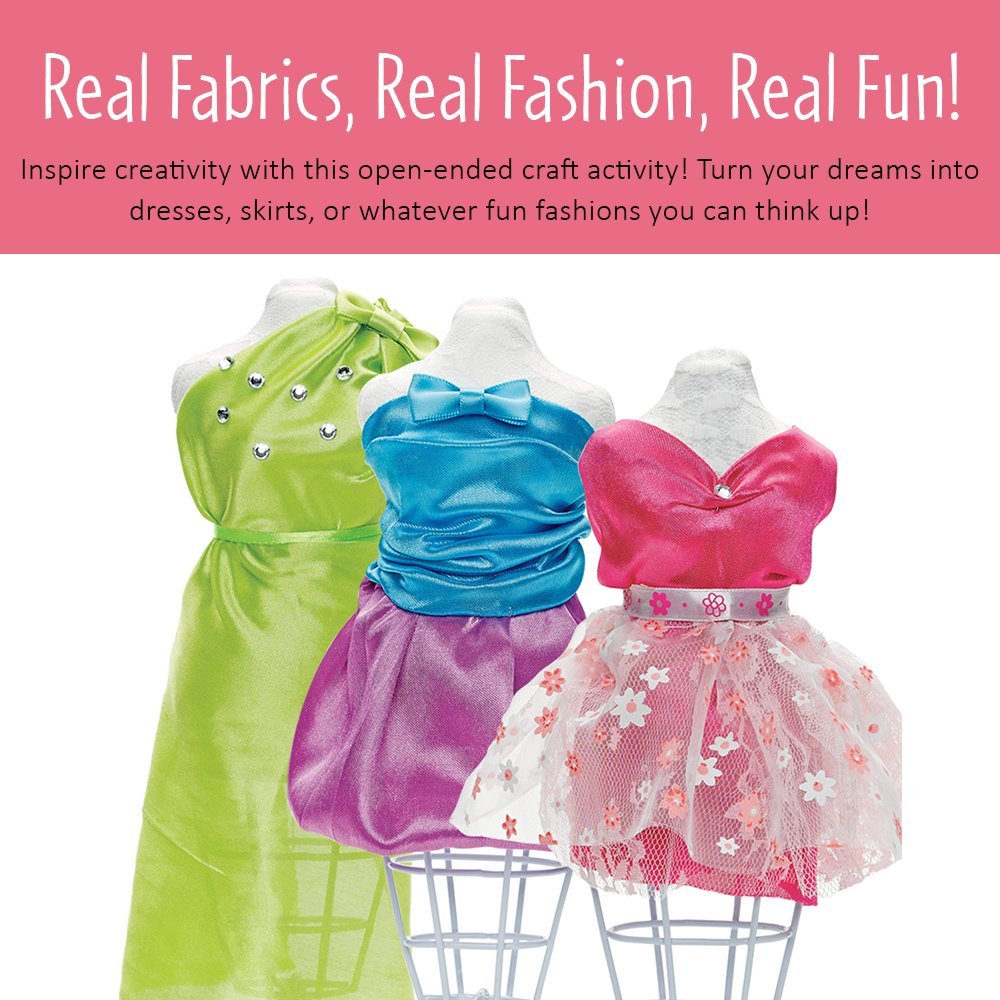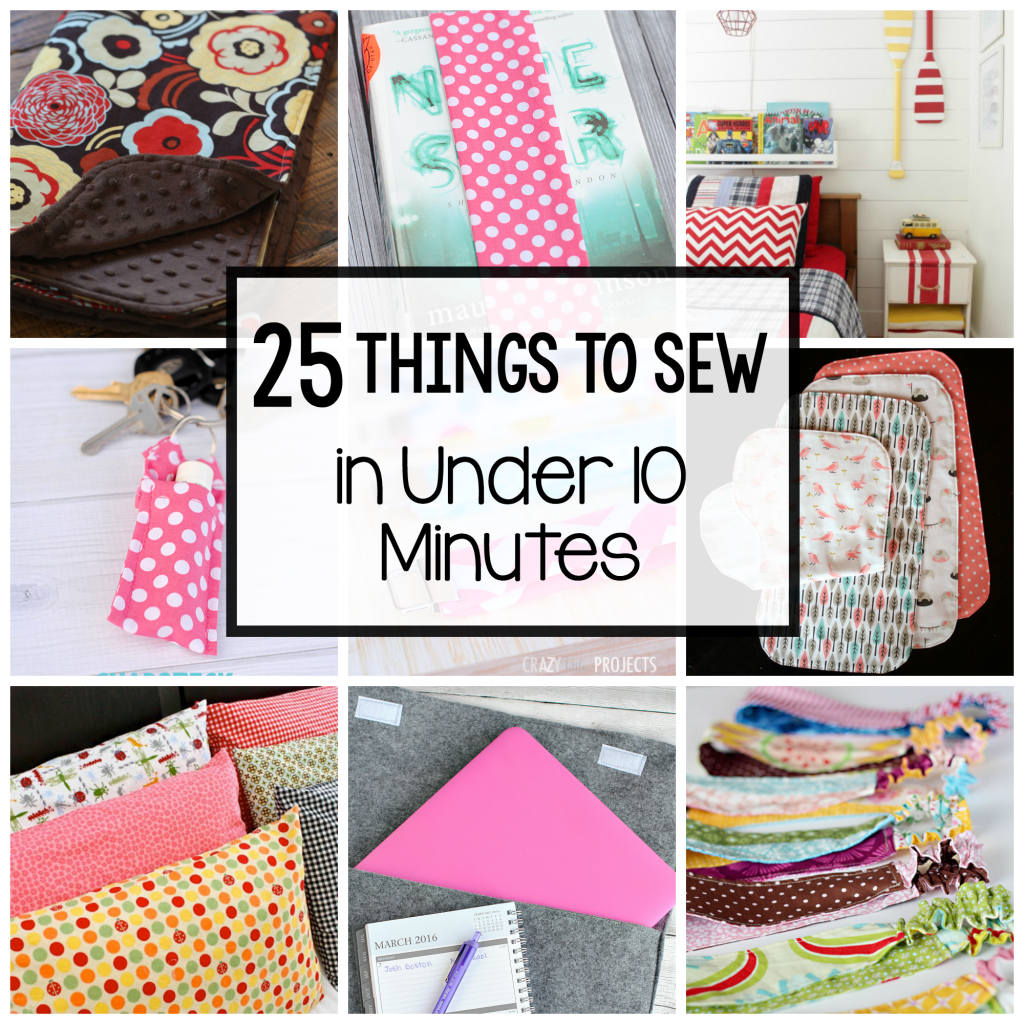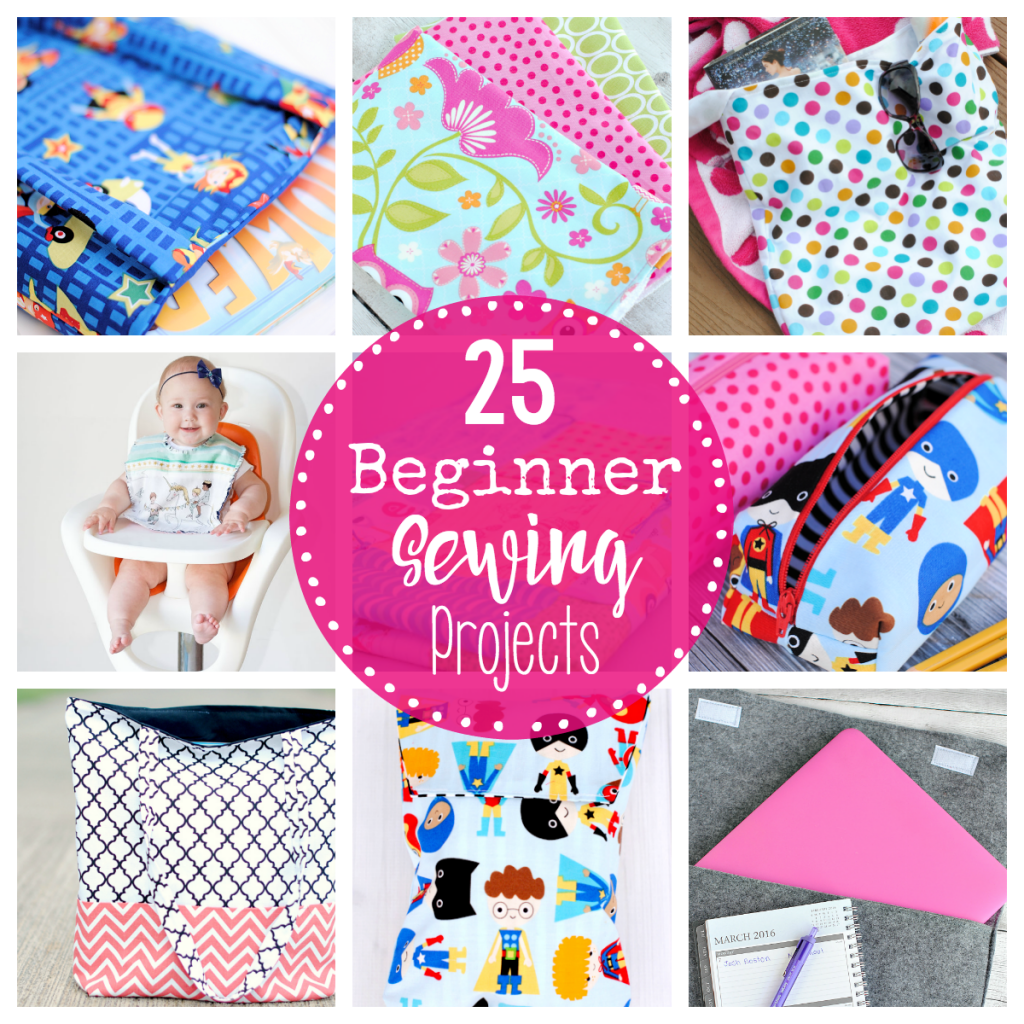Simple sewing projects set the stage for a rewarding journey into the world of crafting, offering a chance to create beautiful and useful items with your own hands. Whether you’re a complete beginner or looking for a new hobby, sewing provides a creative outlet and a sense of accomplishment.
This guide will walk you through the fundamentals of sewing, covering everything from choosing the right tools and materials to mastering basic stitches. We’ll explore a variety of beginner-friendly projects, from simple tote bags to stylish home decor accents, all designed to build your confidence and inspire your creativity.
Sewing for Home Decor
Sewing for home decor offers a creative and cost-effective way to personalize your living space. From throw pillows to curtains, you can transform your home with unique and stylish accents. This section will guide you through three simple projects that are perfect for beginners.
Designing a Throw Pillow Cover
A throw pillow cover is a quick and easy project that allows you to experiment with different fabric patterns and textures. You can create a cohesive look by using coordinating fabrics or opt for a more eclectic style by mixing and matching.
- Choose your fabric: Select two fabrics, one for the front of the pillow cover and one for the back. You can choose a solid color for the back or a patterned fabric that complements the front fabric. Consider the size and shape of your pillow insert when selecting your fabric.
- Cut your fabric: Cut two pieces of fabric for the front and back of the pillow cover, ensuring they are slightly larger than the pillow insert to allow for seam allowances. Measure the pillow insert and add a 1/2 inch seam allowance to each side.
- Sew the seams: Pin the right sides of the front and back fabric pieces together. Sew along the edges, leaving a small opening for turning. Trim the seam allowance and turn the pillow cover right side out.
- Insert the pillow: Insert the pillow insert through the opening you left. Fold the opening edges inward and stitch them closed.
Sewing a Basic Curtain Panel
Basic curtain panels are a simple and versatile way to add privacy and style to your windows. You can choose from a variety of fabrics, from lightweight cotton to heavier linen, to create a look that complements your home decor.
- Determine the size: Measure the width and length of your window and add an extra 6-8 inches to the width for fullness and 4-6 inches to the length for the hem.
- Cut your fabric: Cut two pieces of fabric for the front and back of the curtain panel, using the dimensions you calculated in the previous step.
- Sew the seams: Pin the right sides of the front and back fabric pieces together and sew along the edges. Press the seams open.
- Hem the edges: Fold the raw edges of the curtain panel inward by 1/2 inch and then again by 1/2 inch. Sew along the folded edge to create a neat hem.
- Add a rod pocket: Fold the top edge of the curtain panel inward by 1 inch and then again by 2 inches. Sew along the folded edge to create a rod pocket for hanging the curtain.
Creating a Stylish Table Runner
A table runner is a simple way to add a touch of elegance to your dining table. You can use a variety of fabrics, including cotton, linen, and silk, to create a runner that complements your table setting.
- Choose your fabric: Select a fabric that is durable and easy to clean. Consider the size and shape of your table when selecting your fabric.
- Cut your fabric: Cut a piece of fabric to the desired length and width of your table runner. Add a 1/2 inch seam allowance to each side.
- Hem the edges: Fold the raw edges of the table runner inward by 1/2 inch and then again by 1/2 inch. Sew along the folded edge to create a neat hem.
- Add embellishments: If desired, you can add embellishments to your table runner, such as lace, ribbon, or buttons. You can also use different sewing techniques, such as quilting or embroidery, to create a more elaborate design.
Sewing for Personal Use

Sewing for personal use can be a fulfilling and rewarding hobby. It allows you to create unique and personalized items that reflect your style and needs. This section will explore a few simple sewing projects that you can tackle at home, from reusable shopping bags to stylish headbands.
Reusable Shopping Bags
Reusable shopping bags are a great way to reduce your environmental impact and save money. They are also incredibly versatile and can be used for a variety of purposes. Here’s a simple tutorial for making your own reusable shopping bag:
- Materials: You will need a piece of fabric (cotton, canvas, or linen work well), a sewing machine, thread, scissors, and a measuring tape.
- Cut the Fabric: Cut two rectangles of fabric, each measuring 18 inches by 20 inches. You can adjust these dimensions to your desired size.
- Sew the Sides: Pin the two fabric rectangles together, right sides facing. Sew along the two long sides, leaving a 1/2-inch seam allowance.
- Turn Right Side Out: Turn the bag right side out through the open end. Press the seams flat.
- Sew the Bottom: Fold the open end of the bag under by 1/2 inch, then fold it under again by another 1/2 inch. Press the fold. Sew along the folded edge to create a finished bottom.
- Add Handles: Cut two strips of fabric, each measuring 2 inches by 20 inches. Fold the long edges of each strip under by 1/4 inch, then fold them under again by another 1/4 inch. Press the folds. Sew along the folded edges to create finished handles.
- Attach Handles: Pin the handles to the top of the bag, one on each side. Sew the handles in place, making sure to secure them well.
Simple Makeup Bag with Multiple Compartments
A simple makeup bag with multiple compartments can be a great way to keep your cosmetics organized and easy to find. This project is relatively easy and can be customized to fit your specific needs.
- Materials: You will need a piece of fabric (cotton, canvas, or linen work well), a sewing machine, thread, scissors, a measuring tape, and a zipper.
- Cut the Fabric: Cut two rectangles of fabric, each measuring 10 inches by 12 inches. These dimensions can be adjusted to your desired size.
- Sew the Sides: Pin the two fabric rectangles together, right sides facing. Sew along the three sides, leaving the top open. Make sure to leave a 1/2-inch seam allowance.
- Turn Right Side Out: Turn the bag right side out through the open top. Press the seams flat.
- Create Compartments: You can create compartments within the bag by sewing strips of fabric across the width of the bag. For example, you could sew two strips of fabric, each measuring 2 inches by 10 inches, to create three compartments.
- Attach Zipper: Pin the zipper to the top of the bag, right sides facing. Sew the zipper in place, making sure to secure it well.
Stylish Headband or Hair Scrunchie
A stylish headband or hair scrunchie can add a touch of personality to any outfit. These projects are quick and easy to make, and they can be customized with different fabrics and embellishments.
Headband
- Materials: You will need a piece of fabric (elastic or stretch fabric works well), a sewing machine, thread, scissors, and a measuring tape.
- Cut the Fabric: Cut a strip of fabric, measuring 2 inches by 20 inches. You can adjust the length to your desired size.
- Sew the Ends: Fold the ends of the fabric strip under by 1/4 inch, then fold them under again by another 1/4 inch. Press the folds. Sew along the folded edges to create finished ends.
- Sew the Seam: Pin the two ends of the fabric strip together, right sides facing. Sew along the seam, leaving a 1/4-inch seam allowance.
- Turn Right Side Out: Turn the headband right side out through the open seam. Press the seam flat.
Hair Scrunchie
- Materials: You will need a piece of fabric (cotton or satin work well), a sewing machine, thread, scissors, a measuring tape, and an elastic band.
- Cut the Fabric: Cut a rectangle of fabric, measuring 4 inches by 10 inches. You can adjust the dimensions to your desired size.
- Sew the Sides: Pin the two short ends of the fabric rectangle together, right sides facing. Sew along the seam, leaving a 1/4-inch seam allowance.
- Turn Right Side Out: Turn the fabric tube right side out through the open end. Press the seam flat.
- Insert Elastic: Thread the elastic band through the fabric tube. Overlap the ends of the elastic band by about 1/2 inch, then sew them together to secure the elastic band.
- Sew the Open End: Fold the open end of the fabric tube under by 1/4 inch, then fold it under again by another 1/4 inch. Press the fold. Sew along the folded edge to create a finished end.
Sewing Techniques for Beginners: Simple Sewing Projects

Sewing is a versatile skill that allows you to create a wide range of items, from clothing and accessories to home decor and crafts. Mastering basic sewing techniques is essential for any beginner. This guide will provide you with a foundation to embark on your sewing journey.
Basic Sewing Stitches
Basic sewing stitches are the building blocks of any sewing project. Understanding these stitches will enable you to create strong and durable seams.
- Running Stitch: This stitch is a simple and versatile stitch used for basting and joining fabrics. It is created by making small, even stitches along the fabric edge.
- Back Stitch: This stitch is stronger than a running stitch and is used for securing seams. It is created by stitching forward, then back stitching over the previous stitch.
- Slip Stitch: This stitch is almost invisible and is used for finishing seams or attaching fabric edges. It is created by making small stitches along the fabric edge, hiding the thread within the fabric fold.
Using a Sewing Machine, Simple sewing projects
Using a sewing machine can significantly speed up your sewing projects and create more professional-looking results.
- Threading the Machine: Threading the sewing machine correctly is crucial for smooth operation. Consult your machine’s manual for specific instructions. Generally, you will need to thread the bobbin and the upper thread through the needle.
- Adjusting the Stitch Length and Tension: The stitch length and tension affect the appearance and durability of your stitches. The stitch length determines the spacing between stitches, while the tension controls how tightly the thread is pulled.
- Sewing a Straight Seam: Start by practicing sewing a straight seam on a scrap fabric. Use the sewing machine’s guide to keep your fabric aligned and maintain a consistent speed.
- Sewing a Curved Seam: Sewing curved seams requires more practice. Guide the fabric gently around the curve, using the feed dogs to move the fabric smoothly.
Working with Different Fabrics
Fabrics come in a wide variety of materials, each with its unique properties. Understanding these properties is crucial for choosing the right fabric for your project.
- Natural Fabrics: Natural fabrics, such as cotton, linen, silk, and wool, are known for their breathability, comfort, and durability.
- Synthetic Fabrics: Synthetic fabrics, such as polyester, nylon, and acrylic, are often more wrinkle-resistant, water-resistant, and easy to care for.
- Fabric Weight: The weight of a fabric affects its drape and how it handles during sewing. Lightweight fabrics, such as chiffon, are delicate and flowy, while heavyweight fabrics, such as denim, are sturdy and durable.
- Fabric Stretch: Stretchy fabrics, such as spandex and jersey, require special needles and techniques to prevent the fabric from puckering or tearing.
Sewing for Charity and Community

Sewing for charity and community is a fulfilling way to use your skills to make a positive impact on the lives of others. By creating handmade items, you can bring joy, comfort, and support to those in need.
Impact of Sewing Projects for Charitable Organizations
Donating handmade items to charitable organizations can have a significant impact on the lives of individuals and communities. These items can provide comfort, warmth, and a sense of dignity to those experiencing hardship.
For example, handmade blankets can provide warmth and comfort to children in hospitals or shelters, while sewn clothing can help individuals in need feel confident and empowered.
Furthermore, handmade items can be used to raise funds for charitable causes through sales or auctions, further supporting the organization’s mission.
Ideas for Creating Handmade Items for Donation
There are countless possibilities for creating handmade items for donation. Here are some ideas:
- Blankets and Quilts: These provide warmth and comfort, especially for children in hospitals or shelters.
- Clothing: Sew new or repurposed clothing for individuals in need, including children’s clothes, adult clothing, and accessories.
- Toys: Create soft toys, stuffed animals, or activity mats for children in hospitals or orphanages.
- Bags and Accessories: Sew tote bags, purses, or cosmetic bags for women in need.
- Pillows and Cushions: Create comfortable pillows and cushions for those in hospitals or nursing homes.
Charities That Accept Handmade Items
Numerous organizations accept handmade items. Here is a list of some well-known charities:
- The Salvation Army: Accepts a wide range of items, including clothing, blankets, and toys.
- Goodwill Industries: Accepts clothing, household items, and other donations.
- Habitat for Humanity: Accepts furniture, bedding, and other household items for their affordable housing projects.
- St. Jude Children’s Research Hospital: Accepts handmade items for children in the hospital.
- Ronald McDonald House Charities: Accepts handmade items for families staying at Ronald McDonald Houses.
Conclusive Thoughts
With a little practice and a dash of inspiration, you’ll be amazed at what you can create with your sewing skills. So, gather your fabric, thread, and needles, and let’s embark on this exciting journey of crafting together. Remember, sewing is not just about creating beautiful objects; it’s about embracing the joy of creating something unique and personal.
Simple sewing projects can be a great way to relax and create something beautiful. From making a simple tote bag to crafting a cozy throw pillow, the possibilities are endless. And if you’re looking for a way to manage your remote team, consider using an rmm remote solution.
These tools can help you stay connected and productive, even when you’re working from different locations. Once you’ve mastered your sewing skills, you can even create custom fabric covers for your devices to add a personal touch.




